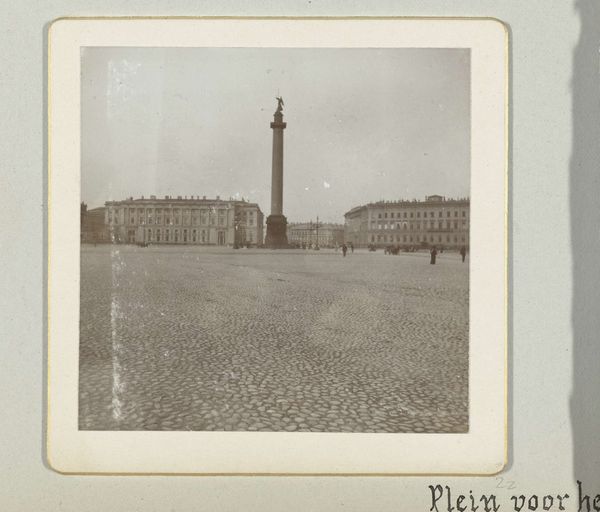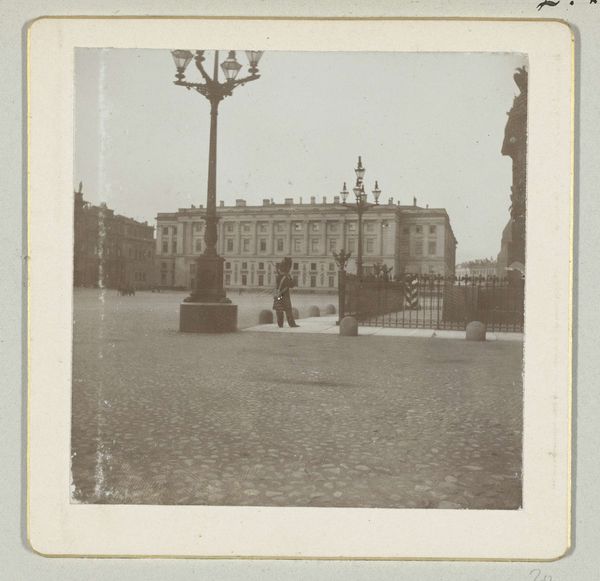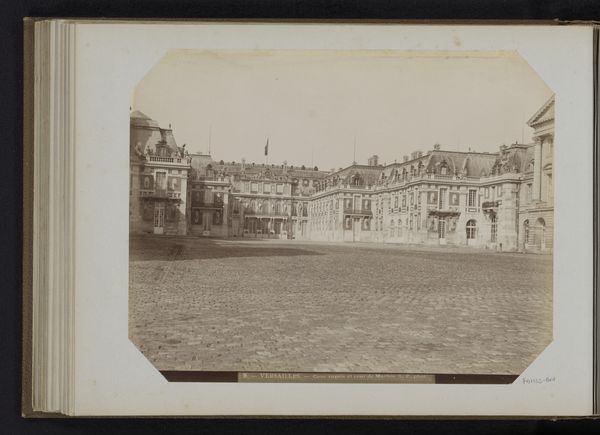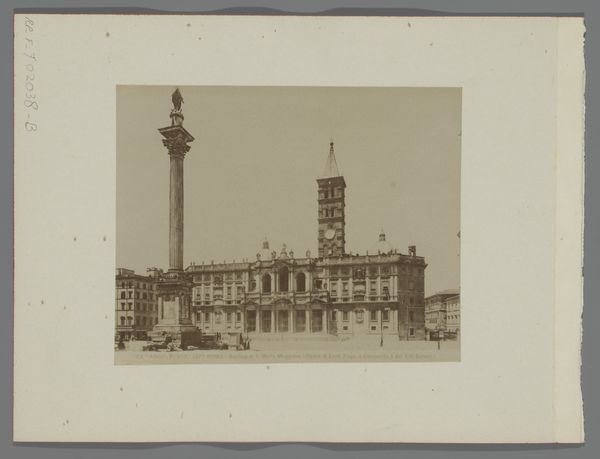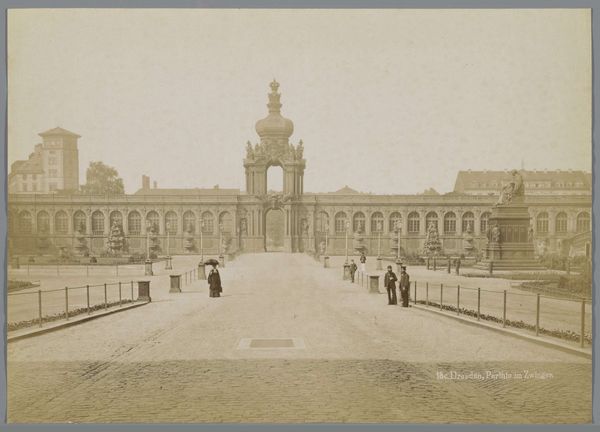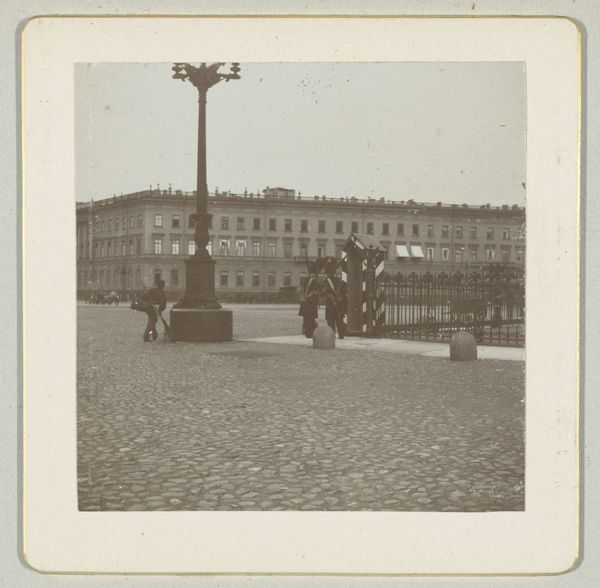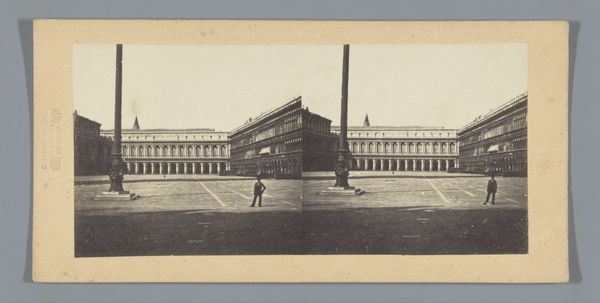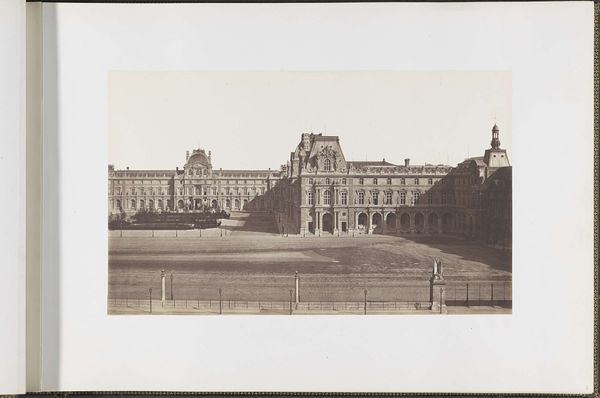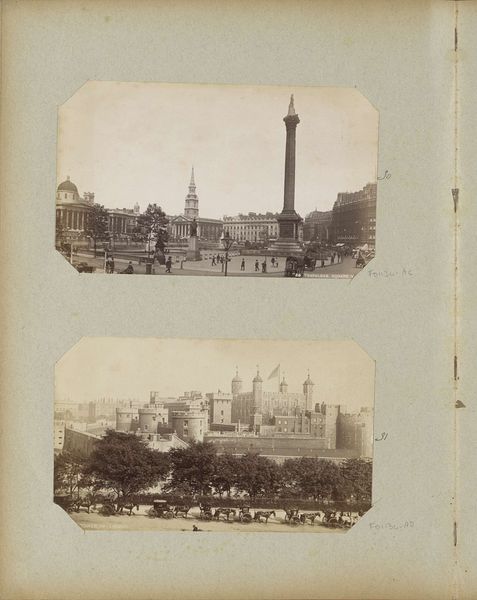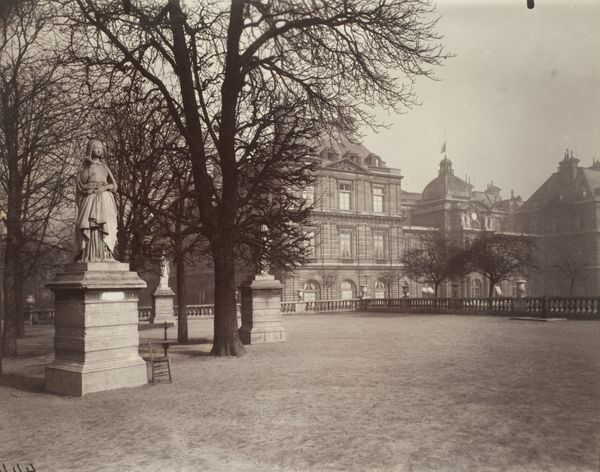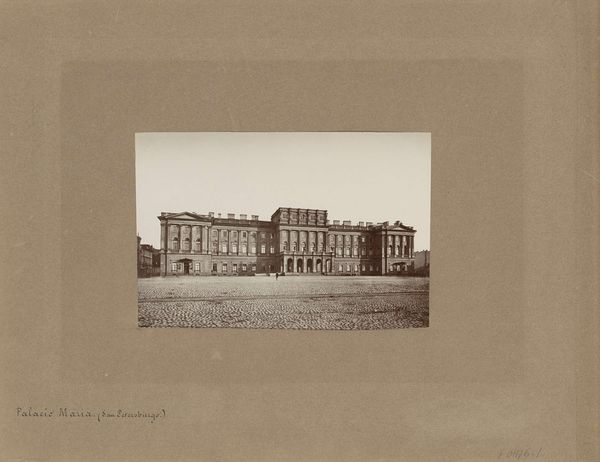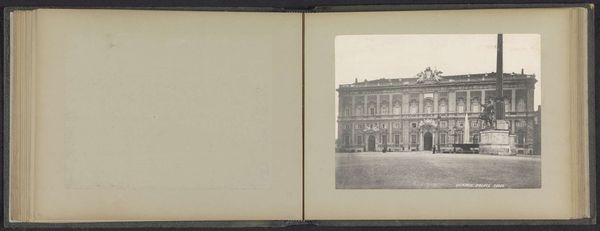
photography
#
landscape
#
photography
#
cityscape
#
realism
Dimensions: height 100 mm, width 100 mm, height 259 mm, width 365 mm
Copyright: Rijks Museum: Open Domain
Editor: So, here we have Henry Pauw van Wieldrecht’s photograph, "The square in front of the Hermitage in St. Petersburg," taken in 1898. It’s…stark, almost overwhelmingly empty. What stands out to you most about this piece? Curator: It’s a photograph that speaks volumes about power, both visible and invisible. Consider the Hermitage itself—once the Winter Palace, an emblem of Tsarist authority. Then you have the Alexander Column, a monument celebrating military victories. The vast square, usually bustling, is rendered strangely quiet. What political climate might have caused van Wieldrecht to produce this work? Editor: Well, 1898 was still a few years before the 1905 revolution, so it’s pre-unrest, I guess. Why do you emphasize power structures in this photograph? Curator: Photography in the late 19th century was becoming more accessible, moving from elite studios to a broader public. This image, reproduced and circulated, played a part in shaping public perception of Russia and its rulers. Look at how the palace is framed – it's imposing but also slightly distant, almost unattainable. What does that suggest about the photographer's perspective? Editor: Maybe a subtle critique? Or simply an observation of social distance? The silence makes it feel almost staged, a theatrical display of control. Curator: Precisely! And the choice of a cityscape, typically vibrant with activity, being rendered so desolate forces us to think about the relationship between the Romanovs and the general public during this time. Even without explicit signs of poverty or hardship, this emptiness speaks to broader socioeconomic tensions simmering beneath the surface. What does such starkness convey to you? Editor: I see what you mean. I was initially just focused on the aesthetic, but now I realize that van Wieldrecht is using this image to communicate about broader social and political ideas, to reflect upon society's tensions, by imbuing silence with profound narrative significance. Curator: It’s amazing how what seems like a simple city view can unravel entire historical narratives!
Comments
No comments
Be the first to comment and join the conversation on the ultimate creative platform.
